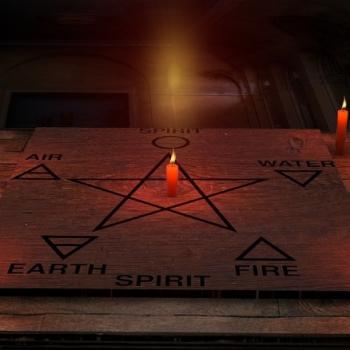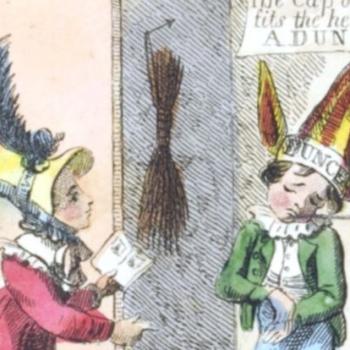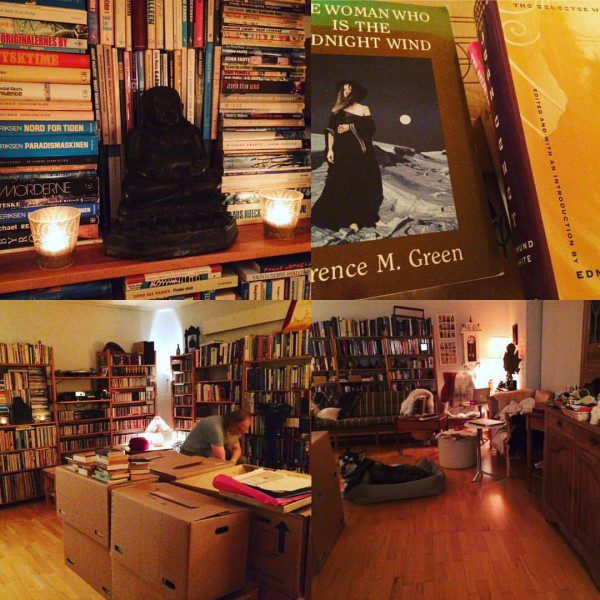
The last couple of weeks I’ve done nothing but counting. How many more boxes to empty? Moving with thousands of books is not funny. Losing your Buddha collection is even less amusing. For days I couldn’t locate the heads. I kept saying to myself: ‘I have a deal with the Buddha. The Buddha must never leave me.’ Now it seemed the Buddha has decided to play pranks on me. ‘Detachment, detachment, nothing but detachment.’
This is what I kept hearing in my head, and the more I was hearing this, the more I kept another image in my head, the one from Monty Python’s Life of Brian.
When the high priest is about to read the law according to which some stoning must occur due to the blasphemous act of uttering the name of god, the one accused kept saying, in desperation over the general stupidity of the law: ‘Jehova, Jehova, all I ever said was ‘Jehova’ in praise of my halibut dinner.’
Detachment, detachment, Jehova, Jehova, same thing. Hallelujah over a cup of coffee, when the Buddhas finally turned up.

Moving can be quite blasphemous. On this moving occasion – the last one was some 10 years ago – I didn’t have either the time or the inclination to nerd about categorizing everything in alphabetical order, so I just stacked books on the shelves without thinking, and quite at random.
I started noticing patterns. Signs. Omens. Indeed, how much more blasphemous can it get when you realize that your academic books are now side by side with your witchcraft books, astrology books, and tarot books?
My Jacques Derrida collection is now saying hello to the other enfant terrible, Aleister Crowley. Harold Bloom is in cohorts with Italian witches, and Freud among women and the heavy occult.
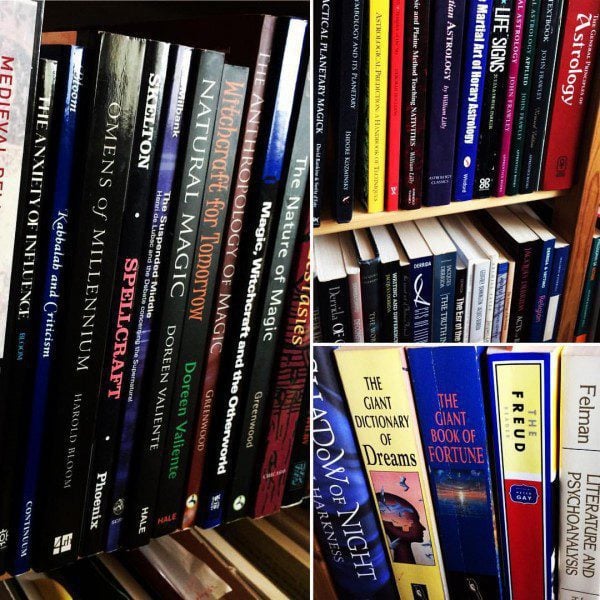
The row containing books by logicians Patrick Blackburn and Vincent Hendricks, former colleagues and friends, begins with The Burnt Book and ends with The Writing of the Disaster.
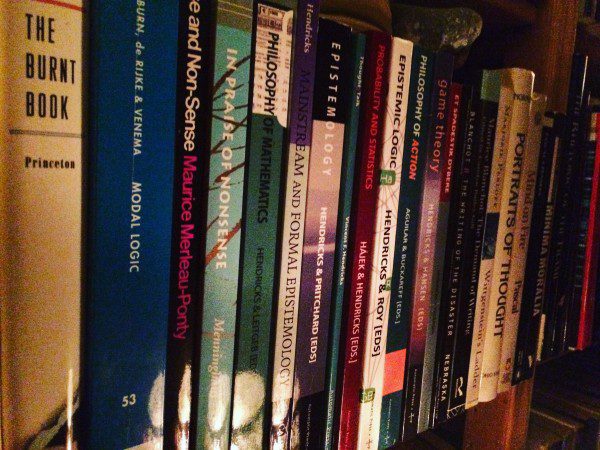
Is all this a sign? Of course it is. All of it.
I remember Jacques Derrida in his one-on-one with me at NYU telling me about reading by fragments – my specialty at the time – and the significance of bibliomancy for literary criticism: ‘I never read Freud other by simply opening one of his books and doing some bibliomantic guessing by pointing randomly with my index finer at some passage.’ Right. We agreed on many things.
It’s exciting to be reminded of just what makes a good cartomancer, namely her ability to recognize emerging patterns in the cards, and create an interesting narrative and synthesis based on their visual language in relation to the to the context of the situation at hand, verbally articulated.
In my current cartomantic class running right now, Radiant Reading, this is exactly what I teach: How you can read cards by being aware of what arises right in front of your nose that you can think of in terms of your cartomantic knowledge, but also in terms of universal wisdom. What is the function of things moving, things at a standstill, action and regret, hope and fear, desire and erotic dreaming?
The art is to allow yourself to experience spontaneously what you already know. This is a pretty tall order, as it goes against contradiction. Either you experience something spontaneously, uncertainty driving your narrative forward, or you know what you know, uncertainty being the result of cultivated intuition, a form of knowledge of the kind that translates as ‘knowing what you don’t know that you do know.’
While finalizing the last details, I find that I respond very quickly and with a vigilant mind to the way the new place tells me what it needs: scrub here, polish there, use that hammer to unbolt old nails. The golden Buddha salutes the shelf whose bookends feature Kafka, If There Were Anywhere but the Desert, and The Future of Nostalgia. I look at all this, and while hoovering the Persian rugs I catch myself smiling, ‘what future’?

People who are not accustomed to maintaining magical awareness would shake their heads and deem what I’ve been doing the result of compulsive cleaning behavior and stacking madness.
But I can safely say that if you allow your space to talk to you, then you can hear very clearly how it wants to be handled. It also tells you what helps to get things done more efficiently.
If you listen to your place it will tell you when it prefers the high German Romantics to the frivolous French. It will tell you that what will help you breathe in unison with your Dyson vaccum cleaner is listening to Waltraud Maier and Birgit Nilsson blast their lungs into your room through Wagner’s genius. If you must suffer for it, then why not suffer the sublime way, the crushing way, the way that goes to hell and back again?
A good cartomancer arranges her house according to resonance and color. The work with the cards is anything but beige and blah blah. So your house is anything but beige and blah blah. Meanwhile, here comes Isolde, killing it…. You find more space for your books to stack in odd places, killing it like she does, grand suffering style, and with a smile on your face.

A good cartomancer knows the meaning of ‘This too shall pass’. Think of this next time you read the cards, or any other signs or omens that happen to come your way: ‘This too shall pass.’
Is this the writing of the disaster, or just the wind in the desert, the future of nostalgia that the Buddha does not endorse, or the fat notes that Nilsson sings as if there’s no tomorrow?…
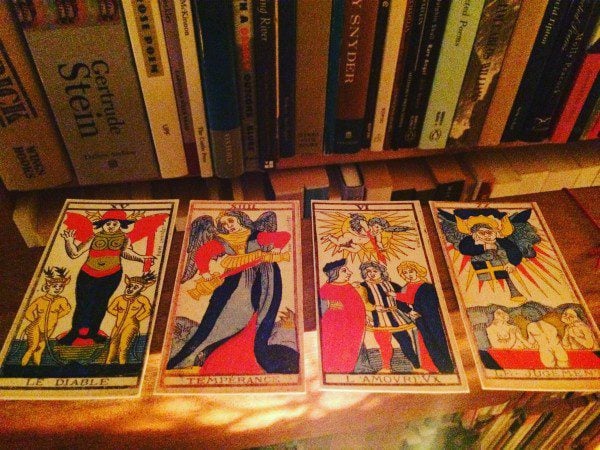
♠

Patheos Pagan on Facebook.

the Agora on Facebook
The Cartomancer is published twice monthly on the Wednesdays here on the Agora. Subscribe via RSS or e-mail!
Please use the links to the right to keep on top of activities here on the Agora as well as across the entire Patheos Pagan channel.









